Sara Lechner has started a new blog called Whatiffing Around and a Flickr group of the same name.
I was first introduced to the "what happens if" by Carol Wilkes, an Australian textile artist, can't remember how many years ago now, but it was at the now defunct "Camp Creative" which was a full week of playing at Katoomba, they had workshops in everything from textiles, drumming, art, blacksmithing, sculpture. Friends and I would rent a cottage in the main street and have the most amazing week.
A couple of years ago I started putting my "whats" experiments in a little notebook, (if you don't write it down, it is too easy to forget the secret ingredient), so I thought I might show it here.
It's a bit of a mixed bag but mostly textile related.
I'll start today with tyvek:
There are lots of web sites around with information on tyvek, enter the phrase "using tyvek for art" into google and you'll find loads of information so I won't repeat all of it here, but will say do it in a well ventilated space, there WILL be fumes, and when you paint it before melting you can add paint fumes as well - not a healthy mix.
There are also different weights and grades of tyvek, what you get depends whether you shop with an art supplier, hardware store or post office.
The first two pictures are the thin sheets bought from an art supply:
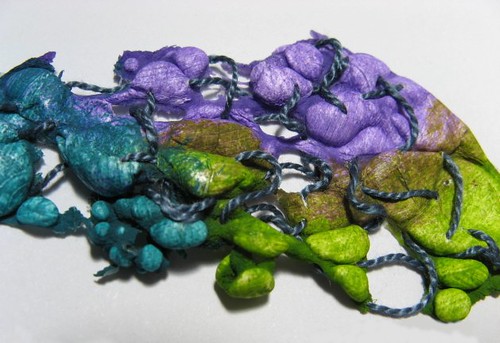
painted and stitched before applying heat with an iron (put it between two sheets of baking paper before ironing)

this was a thin sheet painted then cut before ironing
The next is a piece of tyvek from a pair of painters disposable overalls bought in a hardware store - much softer and pliable fabric but didn't appear to melt as much.
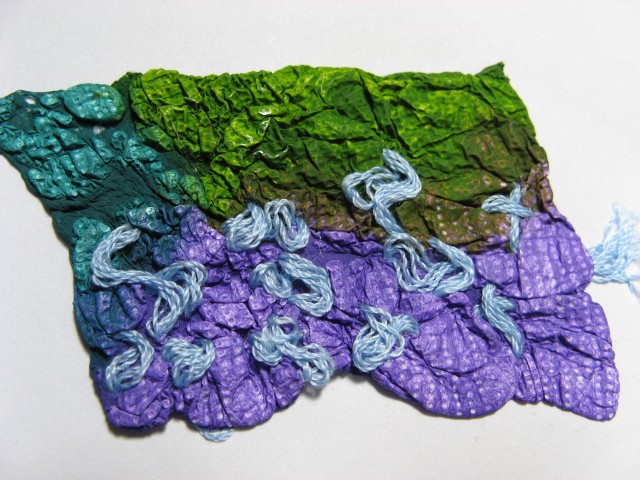
Next is a FedEx bag received in the mail from the US - I haven't checked the Australian Post Office but I'm pretty sure we don't have tyvek bags here.
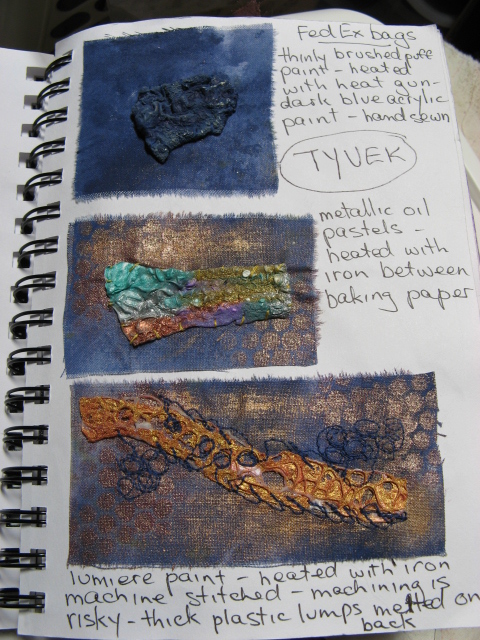
The first piece at the top of this next page was brushed with puff paint, which puffs up on heating - don't ask where to get it! I've had a bottle for about 15 years! (Part of my "Use It and Don't Buy Anything New" programme for this year)
Heated with a heat gun.
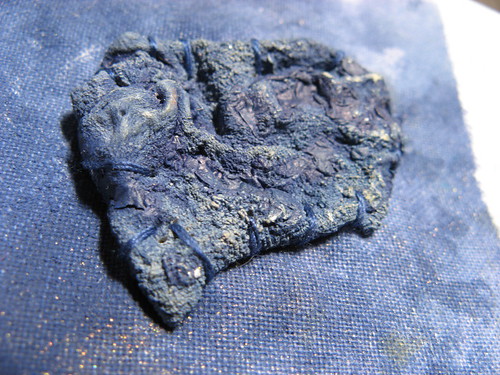
the piece in the centre of page was coloured with metallic oil pastels and ironed.
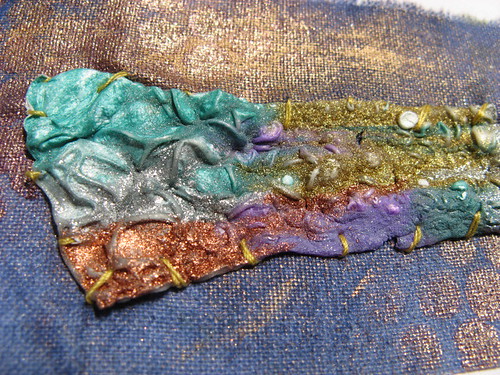
next was painted with Lumiere paint, then melted and sewn in place with free machining - be very careful doing this - you can see the little opaque white bits, they have turned into pure plastic blobs and will break needles. Of all the different grades I tried, the FedEx bag seemed to have the hardest surface when melted.
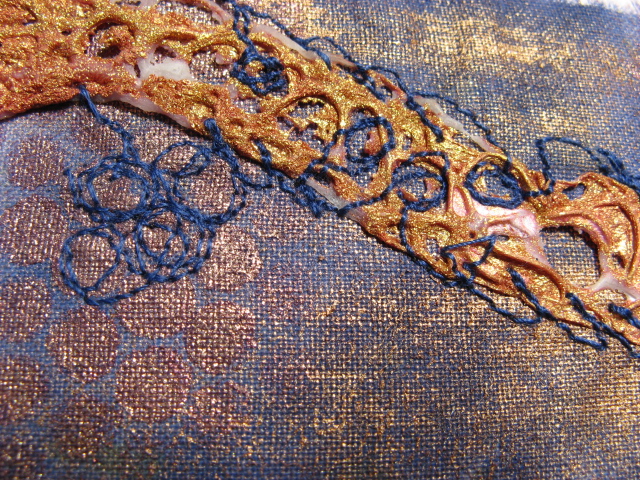
Next is I think my all time favourite piece of tyvek - without any help it seemed to form a goddess shape:
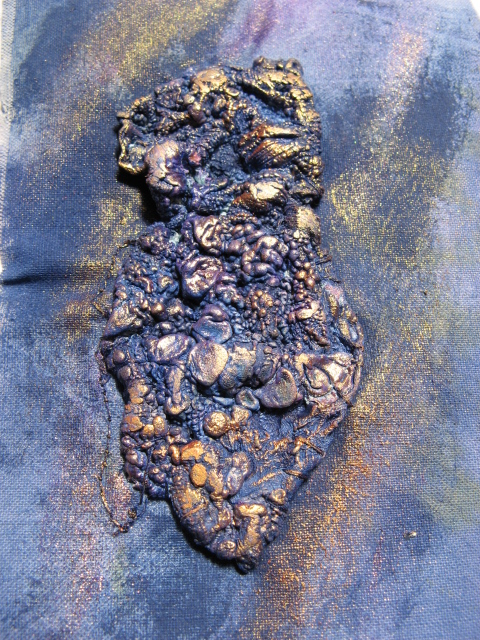
It is thick puff paint on a piece of Fed Ex bag, heated with a heat gun, then dark blue acrylic paint with highlights of gold Lumiere paint, hand sewn after I broke a machine needle on it. Isn't it yummy!

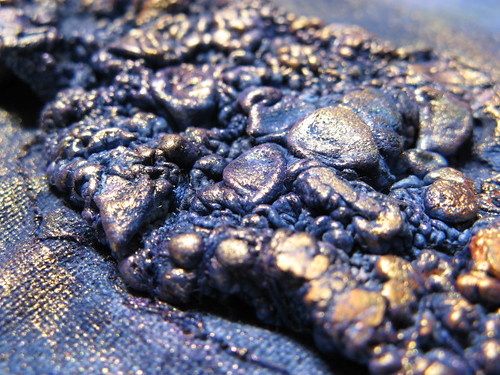
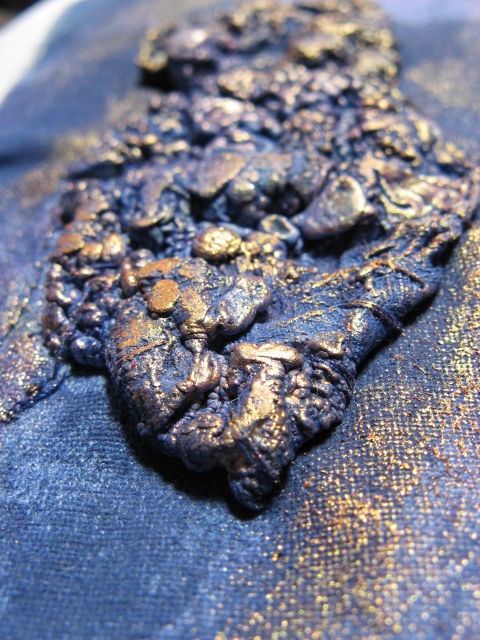
And here's a few more:
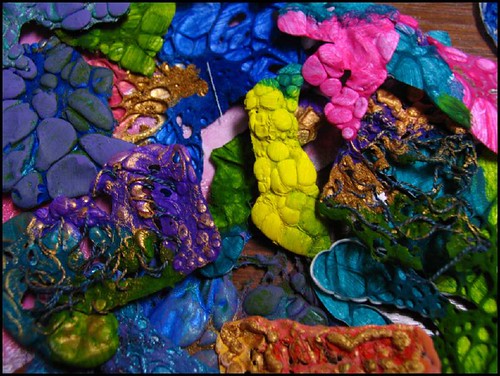
then if you are wondering what to do with all these little pieces, you could work it into your embroidery:
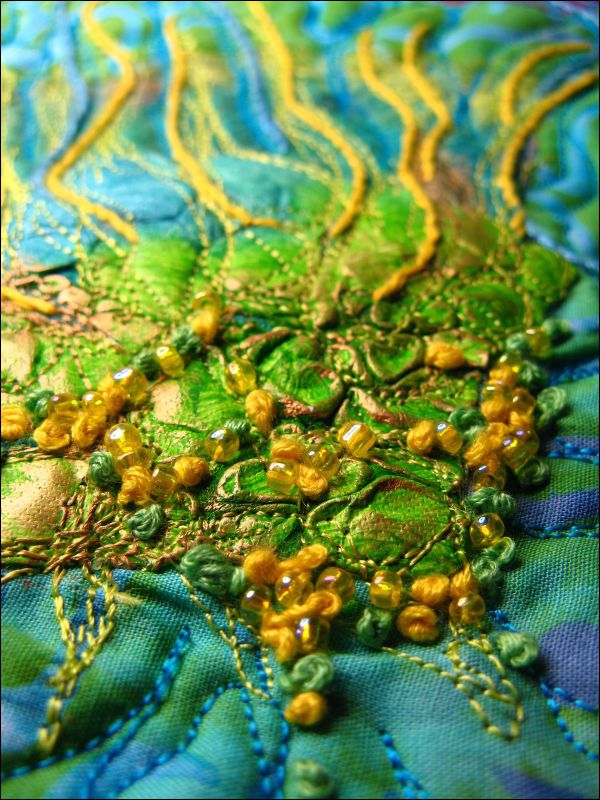

phew!
If you want to see any of these larger, click to go to Flickr, I've made them all small to fit in my new 3 columns template.
I have lots more What Ifs but I think this was the biggest - I might make it a regular What If Wednesday, which should get me working!

9 comments:
they are great - and so inspirational. I just started to experiment with tyvek. I don't like the smell and although I open my window for fresh air it is still nasty. But I like the structures, so organic. I will go to your Flickr and see more of your great stuff.
greetings DOrie
okay that embroidered bit with the lemon beads on lime green is to die for. You're making me reconsider my "eh" about Tyvek ... I wasn't overly impressed with it as an end in itself, but it certainly looks awesome in amongst the beads etc.
Great use of Tyvek. I made some tests two years ago but was not really enthusiastic about it. After seeing your work, I guess I have to reconsider it. Thanks for posting.
Cecile, in cold France
I had to take a look after reading dori's blog and I'm amazed and have to look at tyvek with different eyes
I'll be back
thanks yvette
Thank you for sharing! I feel I'm already participating in the Whatiffer Movement -- I just didn't know it had a name. I love the Whatiffer Wednesday idea and would happily join in the play. I'll be linking to your post on my own blog as I share my own thoughts about Whatiffing.
Thank so much everyone for your comments, I'm so pleased that you can get something from this
That's incredible! What amazing examples of heated Tyvek- and the colors you've used are quite vibrant. I'm wondering if I might use some of the pictures on my blog http://www.materialconcepts.com/tyvek-blog/ and I'd of course link back to you. What you're doing fit's perfectly into what we're blogging about!
Very well done. Doug
Hello Doug - thanks for your comment - you are welcome to use my photos (with the link back as you've noted)
Tyvek is a fascinating material to use in artwork. You have some very interesting information on your blog, I will be back again to read it all and follow the links
this is amazing and really interesting. i have recently been using lining material in my textiles lessons. i have used it with a heat gun and have had similar effect to yours. it is very intersting if you keep the heat gun on it for a while as the plastic melts right through (unfortunatly its a smelly one). you can also wrap the lining material around large glass beads and shells with elastic bands then boil it for about 10mins to get the material to keep the shape.
i might have to make a blog because yours is awesome and i have done lots of exeriments and pieces in school.
its amazing
from Sian
Post a Comment